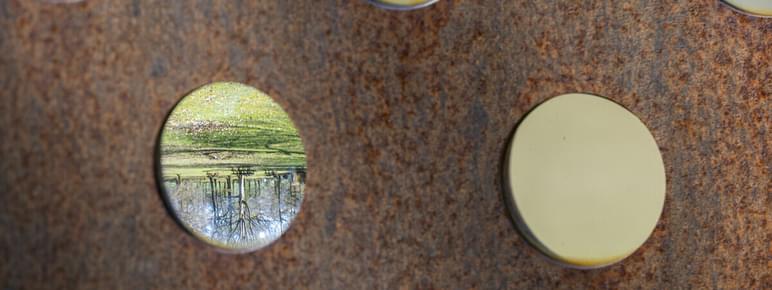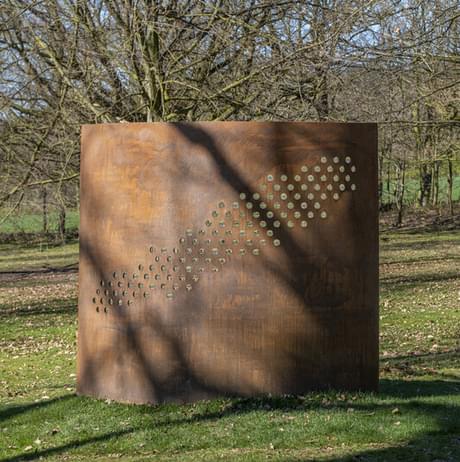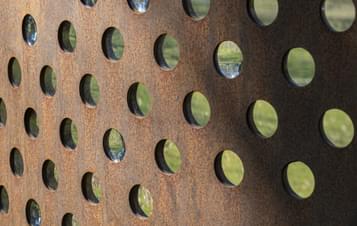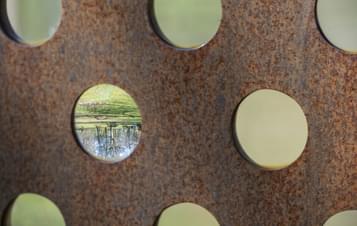
Abigail Reynolds: Anthronauts: Trilobite
Art Outdoors /Abigail Reynolds: Anthronauts: Trilobite
Anthronauts: Trilobite invites us to look at the world in a different way. The steel sculpture is pierced with 120 glass lenses that distort the surroundings, offering an alternative view of the environment. By taking an active role with the work, the artist asks us to be more aware of the lived reality of other life forms, and the limits of human perception.
Trilobites are extinct marine animals that lived for around 300 million years. The creatures had eyes made up of many lenses, which are mimicked in Abigail’s sculpture with 120 glass lenses to see through. The position and focal lengths of the lenses imitate how a trilobite might have seen the world. Their lenses were crystals of a mineral we call Iceland Spar. These ancient creatures did not perceive one single picture like our binocular vision, but an array of adjacent images. They were wiped out as a result of a mass extinction that killed 90% of all species on Earth 250 million years ago. Today, fossils of trilobites are found all over the world.
Abigail’s practice explores our relationship to time, and her work tells stories of lost histories. Trilobite is one of three works in Abigail’s Anthronauts series, commissioned for Picturing Childhood: A new perspective at Chatsworth. The Anthronauts invite us to see in a non-human way.
Making art always involves trying to reconcile a whole set of conflicting desires; towards yourself, towards the audience, towards the set of values you are pushed along by, towards the materials you happen to be working with.
- Abigail Reynolds
Abigail Reynolds (b.1970) lives and works in Cornwall. She studied English Literature at Oxford University and Fine Art at Goldsmiths University, London. Working across sculpture, print and film, she is best known for her collage works of printed photographs that explore the subjects of time and space and question the way we look at the world. Her work is held in many public collections, including Arts Council Collection and The Government Art Collection.
Anthronauts: Trilobite was commissioned by Chatsworth House, Derbyshire, and exhibited there in 2024.
You may also like
- Art Outdoors

Jaume Plensa: Wonderland
Wonderland is a cast iron doorway on the external wall at the end of our visitor centre. It subtly plays with our expectations as it doesn’t open to allow us to pass through. Although it announces itself quietly, this sculpture speaks of our past, present and potential futures. Andi Walker: Wrapped in Cold Hard Comfort
Spring 2026Leeds-based artist Andi Walker presents Wrapped in Cold Hard Comfort, a new outdoor sculpture to be revealed in spring 2026.- Art Outdoors

Peter Randall-Page: Mind Walk
Mind Walk is the latest in an ongoing series of works exploring the idea of one continuous line circumnavigating a three-dimensional form in such a way that the line traverses the entire surface of the stone. The stone in this case is a granite boulder from Bavaria shaped by ‘onion skin weathering’ as a result of thermal and chemical erosion. - Art Outdoors

Andy Goldsworthy: Shadow Stone Fold


